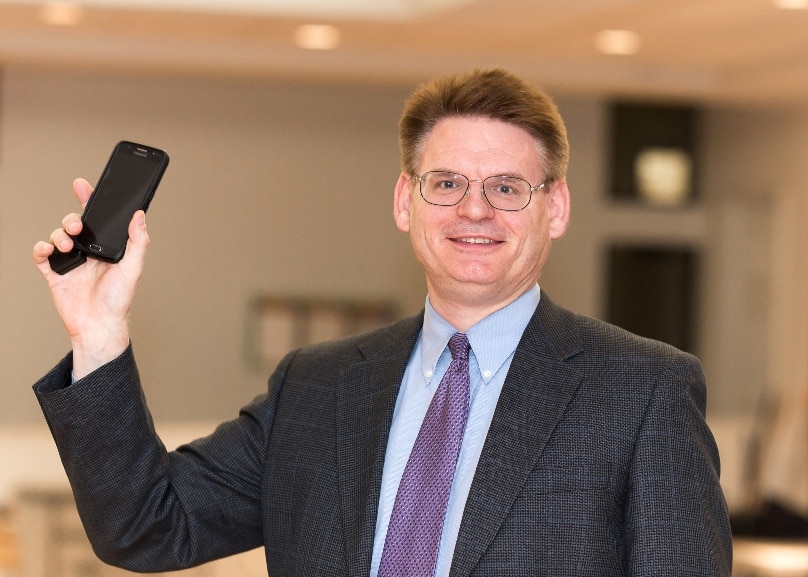
Parents who don’t supervise their children’s online activity and mobile device usage might as well be dropping off their kids at an adult bookstore filled with dangerous strangers.
That was the gist of a frank and wide-ranging conversation on Internet pornography and addiction that licensed clinical therapist and family therapist Peter Kleponis led for some 70 parents and young adult men and teens on 7 March in the Miami archdiocese in the U.S.
The group gathered at St Gregory the Great Church in Fort Lauderdale, Florida.
“Keep the computer use in a public area of the home – you never leave a child alone with the Internet; if you leave a child alone with the Internet you might as well be leaving them alone with a perfect stranger – that is how serious this is,” said Kleponis, who is a licensed clinical therapist and assistant director of Comprehensive Counselling Services in Conshohocken, Pennsylvania.
Kleponis specialises in marriage and family therapy, pastoral counselling, resolving anger, men’s issues, and pornography addiction recovery through the nationally recognised Integrity Restored program.
He is certified in the diagnosis and treatment of sexual addictions by the American Association of Christian Counsellors’ Light University and Freedom Begins Here program founded by Mark Laaser, who has a doctorate in religion and psychology.
Research shows that age 8 is now the average age at which youngsters first encounter online pornography, according to Kleponis. Parents with young children and teens at home need to install parental filtering controls on youngsters’ mobile phones and Internet services at home.
“Even with that, if your child is on the Internet and using any technology a parent needs to be standing behind them watching everything they are doing,” Kleponis said, adding that parents need to be aware that gaming systems with online connections and even public libraries and public access devices have also been widely used for viewing pornography without parental awareness.
“Up to the age of 11, we need to protect kids and they don’t even need to know this stuff exists, and for children 11 years and older we need to educate them about the dangers of pornography so they can reject it and say ‘No’ to it,” he said.
“I also don’t believe young children need to have smartphones, get them ‘flip phones’ or the ‘Cricket’ brand phone which is only used to call Mom and Dad.”
Kleponis’ presentation was in the context of widespread sexual addictions and research that shows pervasive pornography use even among religious-affiliated people including Christians. Before meeting with the lay group of men and teens, Kleponis first led a four-hour session for local priests and deacons who report that they increasingly address the spiritual dimensions of parishioners dealing with pornography issues.
He led them through a presentation of how porn addiction works and how it can be addressed, and he shared a number of statistics:
– Every 39 minutes, a new pornographic video is being produced in the United States, and increasingly they are videos made by amateurs.
– The pornography industry earns over $97 billion worldwide every year; $13 billion comes from the United States.
– There are 4.2 million pornographic websites.
– Forty-seven per cent of Christians say pornography is a major problem in the home; 20 per cent of men admit to accessing pornography at work.
– The percentages of male/female visitors to pornographic websites: 71 per cent are male and 28 per cent are female, with a steadily growing ratio of young female viewers.
“Nobody is immune to this,” Kleponis said, “We are so concerned about the kids who are the number one users of Internet pornographers but adults have to be protected too, and we need to educate ourselves on the dangers of porn and new technology and all technology use,” he said, adding that he recommends the Covenant Eyes website for tools for staying abreast of Internet porn trends and Internet filtering tools.
Parents must have open communications with each other and a willingness to seek help if one adult member of the family is having a problem with porn, he said, adding that the deeper emotional and family problems underlying the porn use need to be addressed through counselling and support groups and 12-step programs.
“We need to do everything possible to protect our kids from this stuff because it is poison,” said Kleponis. He added that if young children are exposed to online porn there are good books and materials to help parents properly discuss the experience with kids.
“For teens, again we limit the screen time, and I suggest no more than two to three hours a day including school work online, and monitor all social media. And you never allow a teenager to isolate with the internet,” Kleponis said.
“The (Internet) access has to be done on the kitchen table where everybody can see that, and we need an online accountability service for computers, tablets and cellphones,” he added.
He advises parents to remind youngsters that they are simply trying to protect children from sexual predators and profit-seeking pornography merchants and that they have a right to supervise all communications devices and social media usage.
Increasingly, he added, there is a growing amount of homemade or amateur-produced pornography, adding yet another layer of worry and complexity for parents and educators.
